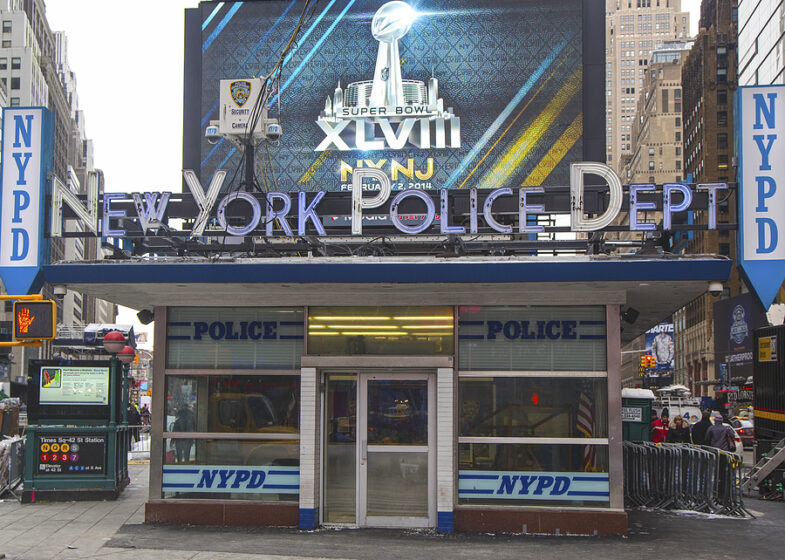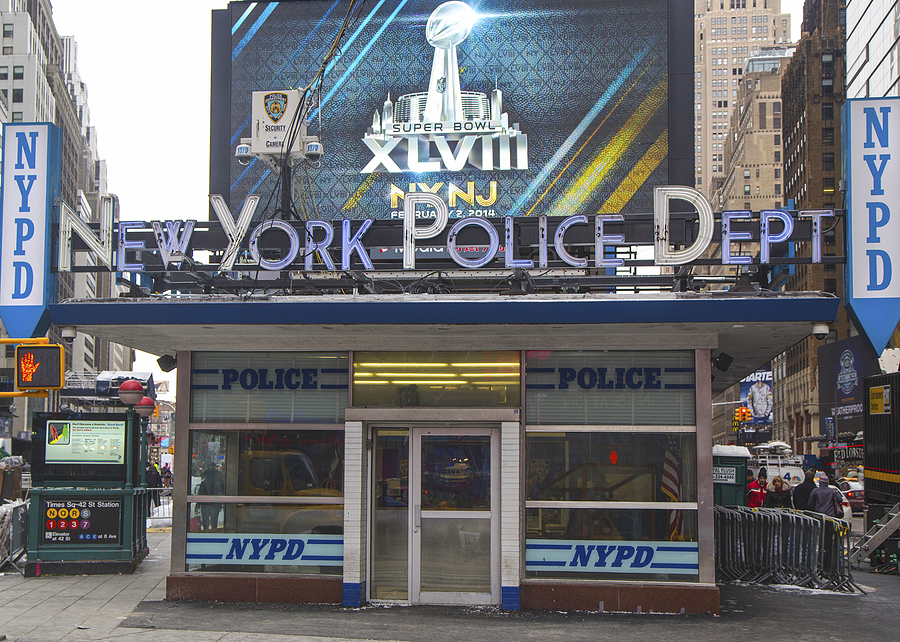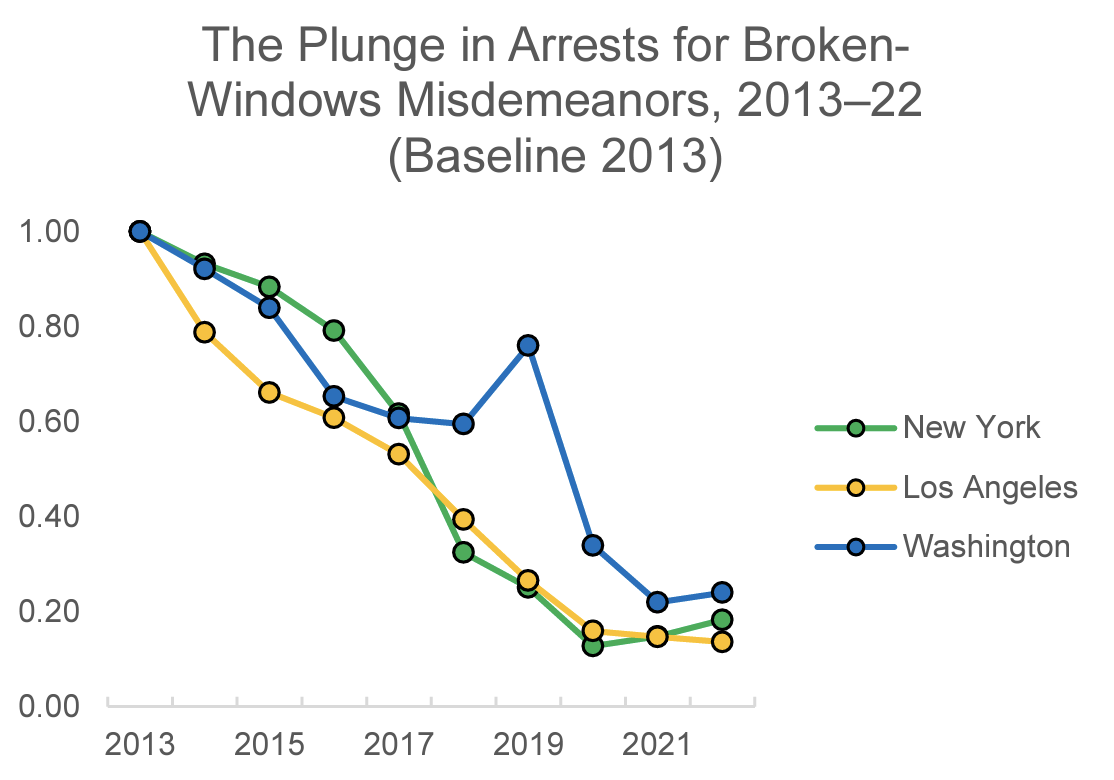
August 09, 2023

Source: Bigstock Many individuals have strong viewpoints on what’s the very best location to live: city, suburban area, or nation? Yet, personally, I’ve delighted in every location I’ve lived and want to see each kind flourish. Hence, I’ve been vocally crucial about the American facility letting our big cities decay into disorder during the Black Lives Matter age.
A brand-new research study by data master Charles Murray, coauthor of The Bell Curve, “The Collapse of Broken-Windows Policing in New York City, Los Angeles, and Washington, DC, 2013– 22,” traces the roots of the 2020s surge in criminal activity (the yearly homicide rate in 2020– 2022 has been 31 percent greater than in 2019) and auto accident (traffic casualties are up 15 percent) to a desertion during the last decade’s Fantastic Awokening of the crime-fighting strategy that had been being successful for a number of decades.
America let most of its big cities break down after WWII, first due to extremely widespread vehicle ownership making rural life more practical, then due to liberals in the 1960s and 1970s letting urban crime run amok.
“Broken-windows policing targeted the careful and computing by revealing them that this isn’t the kind of location that tolerates any of your criminal nonsense.”
Some cities, such as Detroit and Gary, have never ever recovered. But over time, some more privileged places, most significantly New York City, began to see law and order get the upper hand once again.
The urban revival was due in part to conservative social researchers winning a war of ideas and data over the long-dominant liberal academics. In a well-known 1982 Atlantic post, the political researcher James Q. Wilson and criminologist George Kelling noted:
Social psychologists and law enforcement officers tend to agree that if a window in a building is broken and is left unrepaired, all the remainder of the windows will quickly be broken. This is as real in nice communities as in rundown ones. Window-breaking does not always occur on a large scale since some locations are occupied by determined window-breakers whereas others are populated by window-lovers; rather, one un-repaired broken window is a signal that no one cares, therefore breaking more windows costs absolutely nothing.
Wilson and Kelling likewise argued that the sight of people getting away with minor crimes with impunity– such as turnstile jumping, vandalism, vagrancy, salacious catcalling, suspicious loitering, and so on– motivates significant criminal activities like break-in, rape, and murder.
This theory of broken windows was Wilson’s second big conceptual contribution to decreasing crime. The very first– incapacitation– has actually been forgotten because it’s awkward to bear in mind simply how inane liberal elites had gotten in their thinking of criminal offense throughout the 1960s.
Since scientists could not show that jail reformed or hindered lawbreakers, the standard wisdom at that time ended up being: What was the point of sentencing scoundrels to prison at all? So, during the 1960s the variety of individuals in jail decreased even as criminal offense grew.
However, as Wilson explained in the 1970s, someone can’t be dedicating more street criminal offenses if he remains in jail rather than out on the streets. At minimum, jail immobilizes criminals.
Approved, Wilson’s very first concept– that if Central Park assailants are in jail, then they can’t hold up people in Central Park– does not seem like a genius insight today. But it was, apparently, a blinding revelation in 1975.
Wilson concluded his book Thinking of Criminal activity:
Wicked people exist. Nothing avails except to set them apart from innocent people. And many people, neither wicked nor innocent, however careful, dissembling, and determining of their opportunities, ponder our response to wickedness as a hint to what they may beneficially do. We have trifled with the wicked, made sport of the innocent, and motivated the calculators. Justice suffers, therefore do all of us.
Broken-windows policing targeted the watchful and determining by showing them that this isn’t the kind of place that tolerates any of your criminal nonsense.
And we shouldn’t ignore some examples of political courage amongst metropolitan leaders around the turn of the century. For example, when billionaire Michael Bloomberg took over as mayor of New York in 2002, murders were currently way down from their peak during the fracture wars a lots years before. However he wasn’t pleased and pushed policies that constantly drove down the murder rate by means of point-of-use gun control.
Bloomberg was entirely without impression about who commits murders, telling elites in Aspen:
Ninety-five percent of your murders– killers and murder victims– in shape one M.O. You can just take the description, Xerox it and pass it out to all the polices. They are male minorities, 16 to 25. That’s true in New york city. That holds true in virtually every city. Which’s where the real crime is. You have actually got to get the guns out of the hands of the people that are getting eliminated.
President Donald Trump instantly responded:
“WOW, BLOOMBERG IS An OVERALL RACIST!”
However Trump later erased this tweet and rather substituted that Bloomberg was brief and bad at golf.
A forgotten example of great management was displayed by James Hahn, a one-term mayor of Los Angeles from 2001 to 2005. He defeated Antonio Villaraigosa’s Mexican-Jewish liberal coalition by assembling an uncommon team of blacks and more conservative whites. But once in office, he chose to not use LAPD’s well-meaning but inept black cops chief another term in order to employ the most talented police chief of his generation, Rudy Giuliani’s former cops commissioner Bill Bratton. Black citizens were outraged and deserted Hahn for Villaraigosa in the next election. But L.A. policing improved.
Due to individuals like Wilson, Bloomberg, and Hahn, in this century order picked up. Thus, urban living became more popular.
To live in a huge city, you require policing. If you commute to operate in an F-350, you can get by without much order. But if you save on cash by commuting in a metal box, whether train or bus, you actually need to be confident that your fellow commuters with whom you are confined aren’t crazymen.
For that reason, even downtown Los Angeles, which is arbitrarily positioned twenty miles inland, got fashionable.
But that now appears like a long period of time earlier.
The decline of cities in this decade is partly due to Covid making public transportation out of favor, and partially to work-from-home proving not as infeasible as was long presumed. Reporter Sam Quinones points to fentanyl and, maybe, a different kind of meth showing up in the huge cities around 2015, leading many to go homeless in order to save on rent and invest more on drugs.
But a big factor is that elites decided that order was racist, which has actually caused more crime.
Murray’s brand-new paper puts together arrest data for 3 leading cities from 2013 to 2022: New York, Los Angeles, and Washington, D.C. He keeps in mind:
The years after 2020 did see new outbreaks of criminal activity, but the years leading up to 2020 had paved the way.
These are 3 extremely essential American cities. They more or less created crack cocaine in their vicious years, 1986– 1989. And they might have been the most influential cities to have actually legalized abortion in 1969– 1970, despite Steven “Freakonomics” Levitt’s guarantee that abortion would minimize the variety of frustrating youths.
Murray discovers that in these 3 essential cities, arrest rates for broken-windows policing collapsed as long ago as 2014, the year of Ferguson:

The unexpected spike in Washington, D.C., in 2019 was due to a local decision to detain the swarms of woman of the streets surrounding hotels. But arrests for small offenses decreased from 2013 to 2019 by about two-thirds in both New York and Los Angeles.
Murray explains:
… Arrests for drunk driving decreased 70 percent in New york city, 59 percent in Los Angeles, and 45 percent in Washington. But intoxicated chauffeurs are often identified just after they have actually been pulled over for some other reason. A car pulled over since it has, say, a broken taillight turns out to have an inebriated chauffeur. Or maybe the driver is bring an illegal weapon or is desired on an arrest warrant for a previous criminal offense. Informing cops to use more restraint in pulling over cars driven by minorities must inevitably lower arrests of intoxicated drivers.
A fascinating question is whether we can fine-tune policing to minimize criminal activity and disorder without plaguing black youth a lot.
I’m actually understanding to Bill de Blasio’s attempt to cut back on the huge quantity of stop-and-frisk in Michael Bloomberg’s third term without going back to the Death Dream period, by bringing back Giuliani’s leading cop Costs Bratton to determine a smarter path. NYC stop-and-frisks numbered 685,000 in 2011 but fell to 11,000 in 2017, which was still an excellent year for law-abidingness, with the fewest murders given that Joe DiMaggio played for the New york city Yankees in the early 1950s.
What appears to me is that the NYPD altered the culture of scoundrels toward leaving their weapons in the house for worry of being stopped and shaken down by the police officers searching for a prohibited handgun. This succeeded point-of-use weapon control. But then this fear by lawbreakers was exploded throughout the Floyd Effect, with disastrous consequences.
In Chicago, on the other hand, the guns came out instantly during the racial reckoning. The sixth day after George Floyd’s death, Sunday, May 31, 2020, was the most homicidal in Chicago’s storied history of murder, with eighteen murders. New York City scoundrels, on the other hand, took a couple of more weeks to attempt think that the terrifying NYPD had been neutered, so the shootings didn’t take off up until mid-June.
However a crucial question remains whether urbanites can manage with less policing. Murray, a small-town boy, is skeptical:
Numerous explanations can be used for the collapse of broken-windows policing in these three significant U.S. cities, however the impacts are not complicated or subtle. The day-to-day lifestyle of Americans living in much of New york city, Los Angeles and Washington has actually suffered. Boarded-up shops, vandalism and people sleeping on the streets have increased along with smaller sized indignities of life in these areas– public drinking and substance abuse, universal graffiti, intimidation of passersby.
My guess is that the Establishment’s ridiculous post– George Floyd meltdown motivated murders.
But what we require is more analysis of crime information. In my lifetime, the most excellent increase in empirical realism has actually been in baseball stats.
Instead, we require greatly more erudition into matters of life and death.

